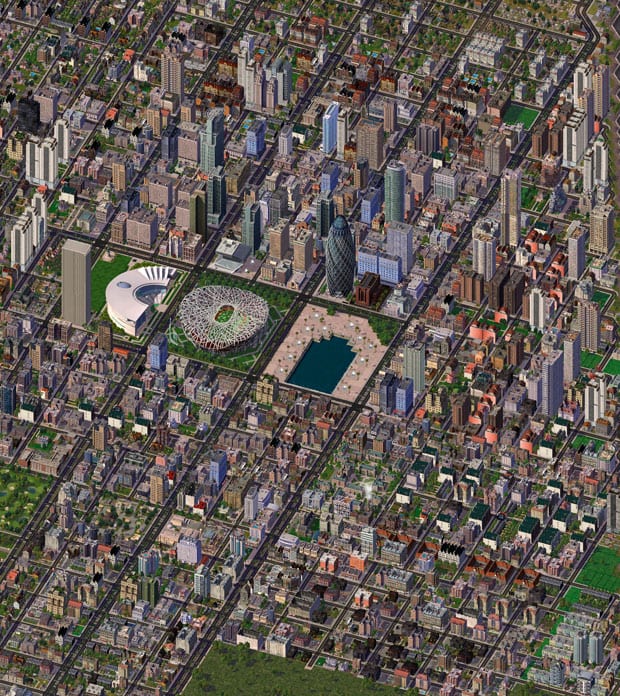
words William Wiles
SimCity, which was first released 20 years ago, isn’t really a game. Its creator, Will Wright, prefers to liken it to a toy – it offers players an open-ended computer simulation of an environment, in which they can design a system and watch it perform. The system being designed and built is a city. There is no way to win, the game has no clear goals for the player to fulfil, and when it was released it was complex in a way that no other game had been at the time. But it is one of the most successful and influential computer games ever made.
SimCity is intended to capture the joy of design. While designing a routine helicopter-attack game in the mid-1980s, Wright discovered that developing urban layouts was more entertaining than blowing them up, and started to think about how to channel that pleasure into a game. In 1987, Wright founded games developer Maxis, and in early 1989 the first SimCity was released to critical adulation and commercial success. It spawned three sequels and a huge number of imitators and Maxis-made spin-offs, including SimEarth, SimFarm, SimAnt and The Sims, which itself went on to become the biggest-selling computer game ever.
The first SimCity was relatively crude, but laid down principles that have not changed through its successive sequels. The game system borrows heavily from the writing of Jane Jacobs, the mother of the “new urbanism”, and the aesthetic theories of Chris Alexander. For the most part, rather than building buildings, the player lays out “zones” in which private enterprise does the construction. But the invisible hand won’t do its job unless the zones are supplied with power and roads. And even once basic amenities are hooked up, the zones – which only come in three kinds, residential, commercial and industrial – won’t develop beyond slums if they aren’t very desirable. Slums pay hardly any tax, so to get the cash flowing to city hall, you need to lure in the wealthy by placing zones carefully and adding special buildings like parks and police stations. Desirability, not money, is the true currency of the game.
As the game evolved through to 2003’s SimCity 4, each version added more complexity and detail. Yet it is often criticised for not accurately simulating a city. The game’s squared playing area and use of strictly defined zones – you can’t have people living above shops, for instance – means that it favours the American “gridiron” urban model. Ideologically it is criticised by the left for affording private enterprise too much power, and by the right for not giving private enterprise enough power. Its critics are paying it a compliment: it’s a game that demands to be engaged intellectually. As a starting point for discussion, it serves as a teaching aid for children and aspiring city planners alike.
SimCity might not look exactly like reality, but it’s sold as an entertainment, not a theoretical or governmental tool. And it certainly plays up to how we would like to see the city – as something that can be understood and controlled. We increasingly engage with cities through computers, using Google Maps, Sat Nav and the informational overlays they can provide. Buildings and cities are designed with the top-down view in mind. Reality is catching up with SimCity.

















